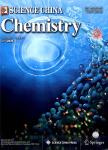Supported noble metal nanoparticles as photo/sono-catalysts for synthesis of chemicals and degradation of pollutants
Supported noble metal nanoparticles as photo/sono-catalysts for synthesis of chemicals and degradation of pollutants作者机构:Beijing National Laboratory for Molecular Sciences Key Laboratory of Photochemistry Institute of Chemistry Chinese Academy of Sciences Beijing 100190 China College of Chemistry and Chemical Engineering Graduate UniversiO of Chinese Academy of Sciences Beijing 100049 China Chemistry Discipline Queensland University of Technology Brisbane Qld 4001 Australia
出 版 物:《Science China Chemistry》 (中国科学(化学英文版))
年 卷 期:2011年第54卷第6期
页 面:887-897页
核心收录:
学科分类:081703[工学-生物化工] 07[理学] 070205[理学-凝聚态物理] 08[工学] 0817[工学-化学工程与技术] 080501[工学-材料物理与化学] 0805[工学-材料科学与工程(可授工学、理学学位)] 0836[工学-生物工程] 082203[工学-发酵工程] 0822[工学-轻工技术与工程] 0702[理学-物理学]
主 题:noble metal nanoparticles photocatalyst sonocatalyst
摘 要:This review summarizes the utilization of supported noble metal nanoparticles (such as Au/TiO2, Au/ZrO2, Ag/AgCl) as efficient photo/sono-catalysts for the selective synthesis of chemicals and degradation of environmental pollutants. Supported noble metal nanoparticles could efficiently catalyze the conversion of solar energy into chemical energy. Under UV/visible light irradiation, important chemical transformations such as the oxidation of alcohols to carbonyl compounds, the oxidation of thiol to disulfide, the oxidation of benzene to phenol, and the reduction of nitroaromatic compounds to form aromatic azo compounds, are effectively achieved by supported noble metal nanoparticles. Under ultrasound irradiation, supported noble metal nanoparticles could efficiently catalyze the production of hydrogen from water. Moreover, various pollutants, including aldehydes, alcohols, acids, phenolic compounds, and dyes, can be effectively decomposed over supported noble metal nanoparticles under UV/visible light irradiation. Under ultrasound irradiation, pollutant molecules can also be completely degraded with supported noble metal nanoparticles as catalysts.



